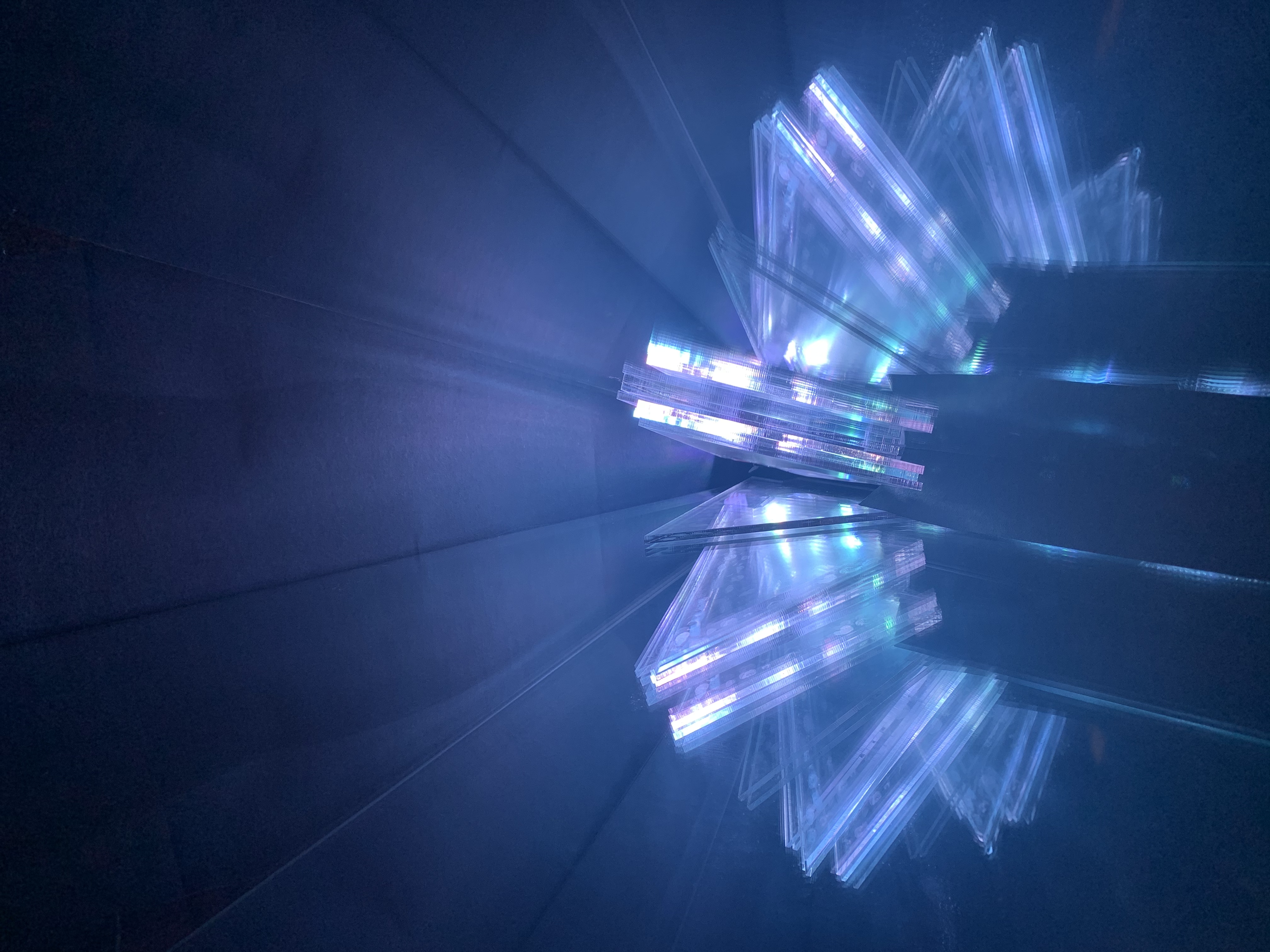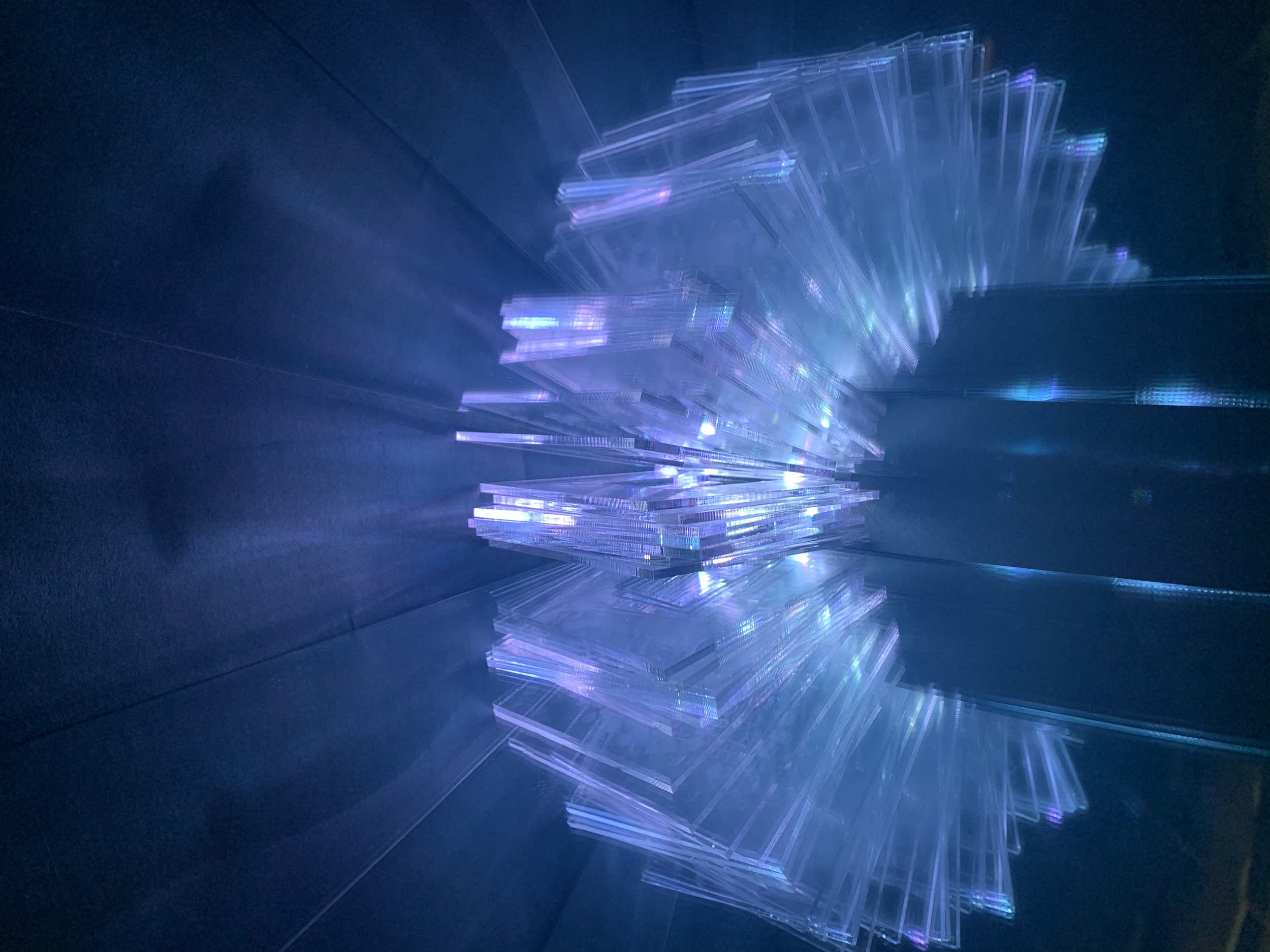Infinite Geometries
Explorations in Light, Reflection, and Perception
Infinite Geometries was my final project for the art class, Sculpture Basics, at Yale University, completed during my senior year in Spring 2021.
Inspired by light-based illusions, I set out to explore how geometry, reflection, and material properties could be combined to create immersive optical experiences.
What began as an experiment grew into a study of how light transforms simple forms into seemingly infinite, shifting environments.
Design Process
I discovered early on that when light touches acrylic, it travels through the material and exits only along the edges, producing a glowing effect. Building on this phenomenon, I:
Sketched and laser cut shapes (squares, triangles, and hexagons) from acrylic using 2D CAD files.
3D printed a custom box with slots to hold the shapes snugly and embedded LED lights to illuminate them.
Experimented with found materials, including two mirrors sourced on campus, dorm room furniture to position them at angles, and black construction paper to frame the space.
Shifted the mirrors around the setup, documenting how each adjustment produced new illusion effects—spiraling vortexes, radiating fans, and crystalline towers.
Illusions in Light and Form
Through the interplay of acrylic, LEDs, and mirrored reflection, the installation transformed simple shapes into expansive, otherworldly environments.
What began as static cutouts became dynamic light sculptures that seemed to grow, multiply, and dissolve into infinity.
Together, these illusions highlighted the power of reflection and material to reframe familiar geometry into something immersive and transformative.
Reflection
This project was highly experimental—I never knew exactly where it would go, and each iteration revealed new possibilities.
It deepened my appreciation for how material properties, geometry, and light can interact to generate spatial illusions, and it marked the beginning of my interest in designing with perception and experiential impact in mind.




